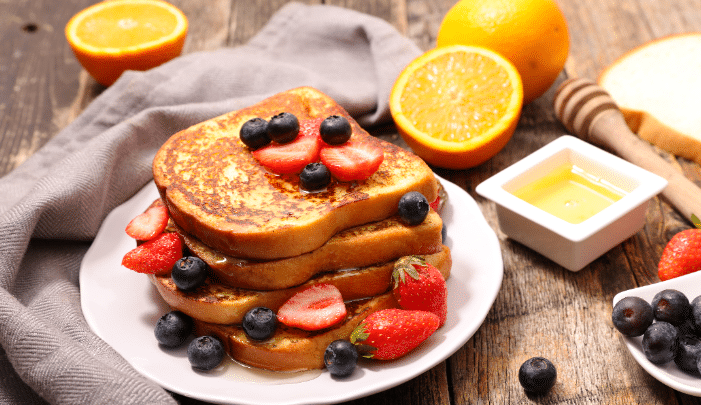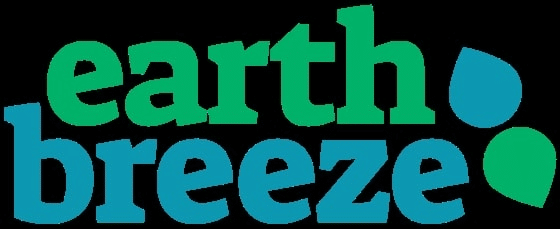National French Toast Day ~ Friday Fun Facts
A Delicious Celebration Of Sweet And Savory Comfort

National French Toast Day is celebrated annually on November 28 in the United States. It’s a day to indulge in the delicious, golden-brown breakfast dish, often made by dipping bread in a mixture of eggs, milk, and spices and then frying it to perfection. People typically enjoy their French toast topped with syrup, powdered sugar, fruit, or whipped cream.
History of National French Toast Day
The history of National French Toast Day is mysterious, as its exact origins remain unclear. The day likely emerged as part of a broader trend in the United States of creating fun, unofficial food holidays to celebrate popular dishes. These holidays often highlight culinary traditions, promote particular foods, and encourage people to experiment with recipes or dine out at restaurants.
Although French toast has a long and varied history, dating back to ancient Rome (where it was known as pan dulcis), National French Toast Day is a more recent invention. Its purpose is less about history and more about celebrating the comforting and versatile dish that has become a staple of breakfast and brunch menus worldwide.
The rise of food holidays like National French Toast Day also owes much to social media, which amplifies their popularity and encourages participation through shared recipes, photos, and promotions. Many restaurants and cafes offer special deals or unique take on French toast to mark the occasion.
Fun Facts about National French Toast Day
1. It’s Not French
Despite the name, French toast isn’t French in origin. Variations of the dish date back to ancient Rome, where it was called Pan Dulcis. The French have a version called Pain Perdu (meaning “lost bread”), which is traditionally made with stale bread.
2. Global Variations
Many countries have their take on French toast:
United Kingdom: Known as “eggy bread.”
Spain: Called Torrijas, often sweetened with honey or sugar.
Hong Kong: Served with peanut butter or condensed milk.
France: it’s known as pain perdu (meaning “lost bread”), as it was traditionally made with stale bread.
Germany: it’s called Armer Ritter (poor knights).
Spain: it’s known as torrijas and often served during Lent.
3. Ancient Origins
The first recorded recipe for a dish resembling French toast appeared in a Latin cookbook titled Apicius around the 4th or 5th century.
4. No One Knows Who Started National French Toast Day
Like many food holidays, the origins of National French Toast Day could be more evident. It likely began as a fun way to celebrate a beloved dish, boosted by social media and food blogs.
5. It’s Versatile
French toast can be sweet or savory, topped with fruits, syrups, whipped cream, or savory ingredients like cheese and herbs.
6. Perfect for Stale Bread
The dish was originally a way to use up stale bread, making it economical and resourceful.
7. The Guinness World Record for Largest French Toast
The record for the largest serving of French toast was set in 2015 in Canada, weighing over 1,300 pounds (590 kg)!
8. French Toast in Pop Culture
French toast has appeared in many TV shows and movies, often symbolizing comfort food. Its iconic status ensures its spot on brunch menus across the globe.
9. Social Media Buzz
Social media platforms light up National French Toast Day with photos and recipes, making it an excellent day for foodies to share their creations.
10. Restaurant Specials
Many restaurants offer unique French toast creations on this day, from stuffed French toast to gourmet versions with exotic ingredients.
11. Unexpected Pairings
Some adventurous chefs have created French toast with unusual ingredients like chocolate, lavender, or savory spices to elevate the dish.
12. Restaurants Love It
Many restaurants offer special deals or unique recipes on November 28 to celebrate National French Toast Day, making it a popular day for breakfast lovers to dine out.
What’s your favorite way to enjoy French toast?
Here are ten easy breakfasts for busy families.
Have you sought a sustainable laundry detergent that won’t break the bank? Look no further! Earth Breeze is an eco-friendly laundry detergent that doesn’t compromise quality over sustainability.
Hypoallergenic, scentless, and philanthropic, Earth Breeze aims to give back with every load of laundry. It is ideal for extended usage, and half a sheet of detergent is more than enough.
For difficult stains, you only need to use more than one sheet. Luckily, Earth Breeze’s strong capabilities can remove stains seamlessly, making it easy to do a lot of laundry without using too much detergent.
Efficient, mess-free, and machine-accessible, Earth Breeze is the quintessential laundry detergent for every kind of family. When you subscribe to Earth Breeze, you invest in a cause to reduce waste and restore nature.
For every package sold, they give away ten more to people in need—ditch liquid detergent for sustainable packaging and increased efficiency.






